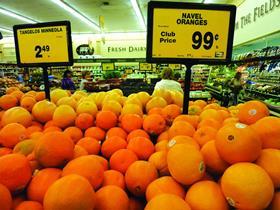
Chilean citrus exports to the US are showing differing performances this season, according to the latest market report from Capespan North America’s president and CEO Mark Greenberg.
As the harvest moves into its final stages, Greenberg said Chilean clementine arrivals continue to show week-on-week declines on both coasts of the US in comparison to last season following drought conditions during production and wet and cold weather at the packing stage.
In the orange category, however, arrivals on the East coast are down, while volume on the West Coast has risen against last year.
“Through Week 28, total [clementine] tonnage to the East Coast has declined by more than 34 per cent over the same period last year, while tonnage to the West Coast has declined by almost 5 per cent over the same period,” Greenberg explained.
“Chilean [navel orange] loadings to the East Coast through Week 28 are running over 35 per cent less than last season over the same period and 22 per cent higher on the West Coast.
“In total, Chile has shipped almost 21 per cent fewer navel oranges to the US through Week 28, or the equivalent of 153,000 15kg cases less so far this season.”
According to Greenberg, the clementines are moving into distribution channels as quickly as they arrive, meaning there is little, if any, weekly carryover of volume.
However, on the East Coast, the only obstacle to immediate sales has been the delays in clearing containers for release at the New York/New Jersey container terminal facilities.
Through Week 29, market prices for value-added clementines in the 10 x 3lbs configuration have held steady at US$32-34 for standard sizes 1-2-3-4 and US$28-32 for size 5, the report indicated.
On the navel market, conditions and prospects are also good, according to Greenberg,
“Today, 40s and 48s are selling at US$28-30, 56s at US$ 26-28 (mostly US$28), 64s at US$24-26, 72s at US$24-26 (mostly US$24) and 88s at US$22-24.
“We expect to see the same general price ranges continue into Week 30 with, perhaps, the “mostly” moving to the lower end of each range.”
Approaching the end of July and into August, Greenberg said Chile’s clementine supplies will continue to diminish while late mandarins will not start to arrive until early-September.
Price-wise, he expects levels for both clementines and navels to hold steady for the next few weeks.



